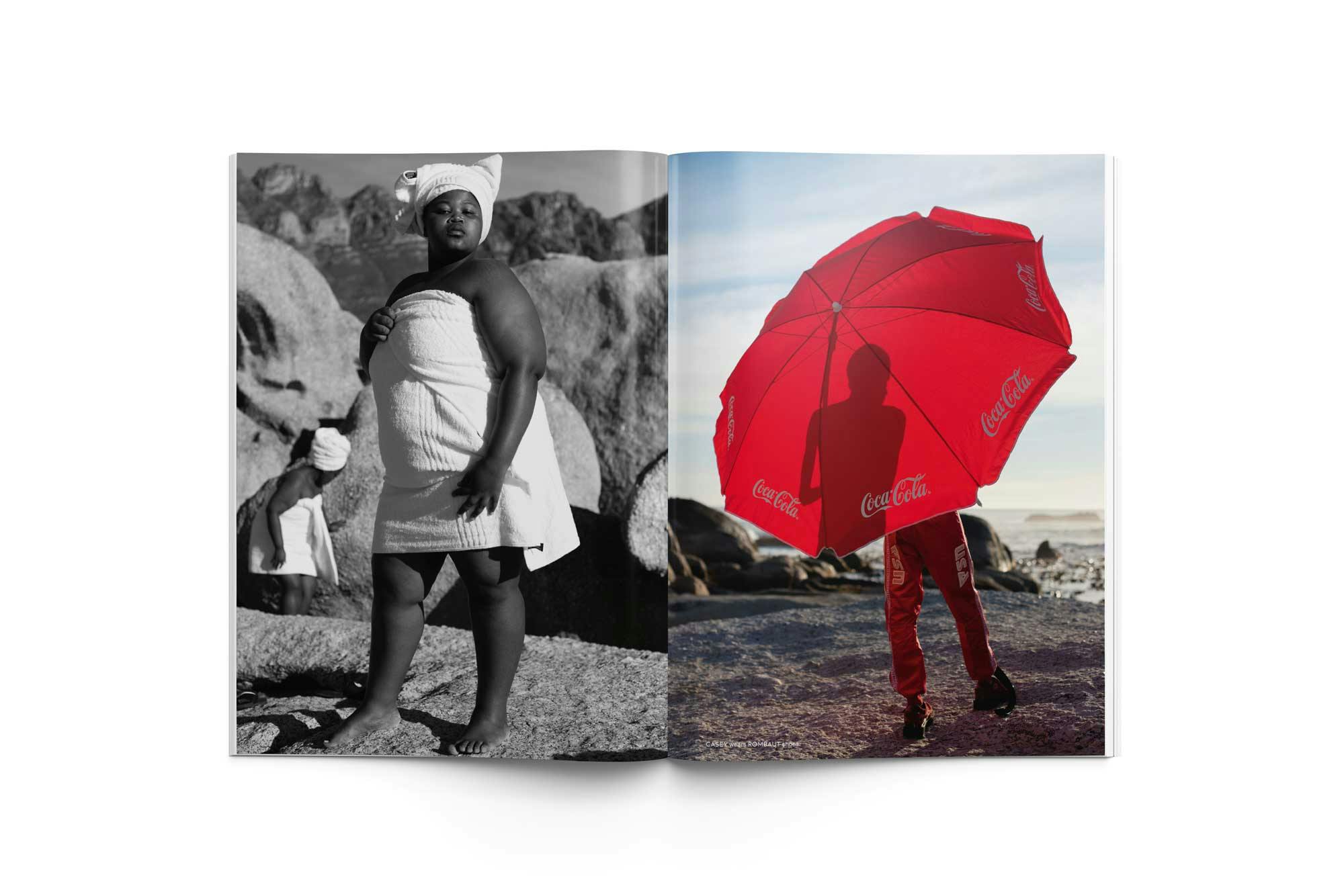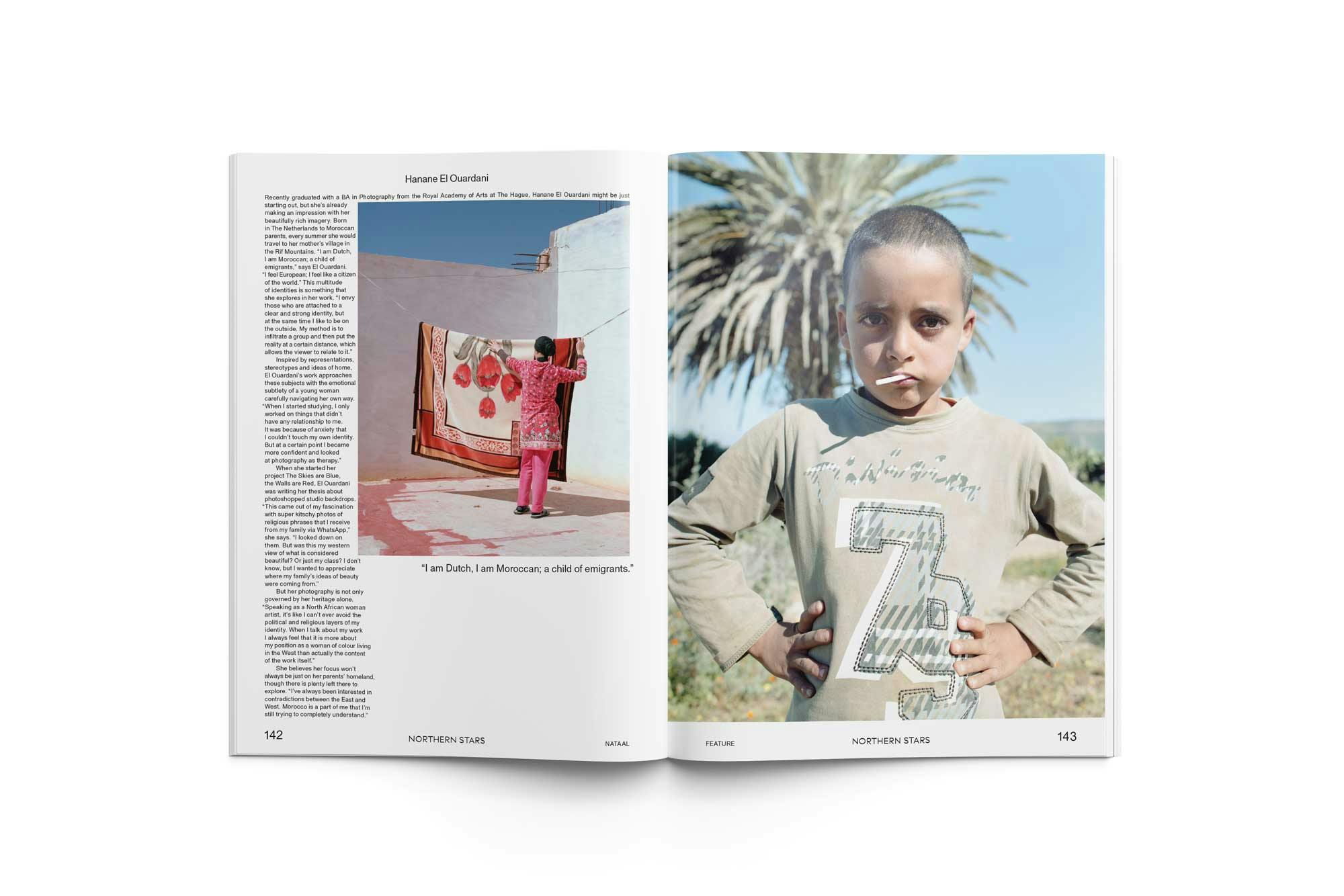“To do life well-dressed is to do life well”
Nataal’s stated aim is to celebrate the spirit of Africa, while acknowledging how “impossibly vast as a term ‘Africa’ even is”. Coffee table book-sized and fabulously glossy, in this second issue big names like Neneh Cherry and Little Simz jostle up against spotlights of emerging artists. The feeling you get flicking through is one of overspill: the design is eclectic, images interrupt the text with a deliberate awkwardness — there is too much good stuff in Nataal to fit the confines of a magazine page.
Last year Nataal won best original non-fiction at the Stack Awards for a story about Versage: knock-off Versace made in Nigeria, emblazoned with a playful reconfiguration of the famous filigree Medusa. And while it’s a shame that the editorial team haven’t included a lengthy piece this time, the writing here is noticeable for its quality. One short, elegant essay by Adjoa Armah deals with the significance of being well-dressed in Ghana: “To do life well-dressed is to do life well. Period. That does not mean being showy or extravagant, necessarily. Just come correct.” If you had to classify Nataal you would call it a fashion magazine. But the shoots on these pages feel more like art pieces; images are swaggering, and often surreal.
Helen Jennings, Nataal’s editorial director and co-founder, talks us through a triumphant second issue.
What is it about an artist that will make them a good fit for Nataal? What are you looking for in the artists you feature?
Nataal is dedicated to promoting and collaborating with emerging African artists, so we are always on the hunt for new names to feature. There is so much energy and talent coming through that we are spoilt for choice, so what makes someone stand out is that they have a bold point of view and a positive contribution to make to the global creative conversation. Young artists like Ghanaian musician Amaarae, Sierra Leonean spoken word artist Julianknxx, and Nigerian fashion designer Bloke appear in issue two. Of course alongside new artists, we also profile bigger names who are either ruling the waves now, such has Little Simz and Laduma Ngxokolo, or have lead the way and continue to influence, like the legendary Neneh Cherry. It’s bringing these voices together and feeling how they support each other that feels exciting.
As an editorial team, where did you grow up? What was it that first drew you to celebrating contemporary African creativity?
I’ve been focused on the African creative industries for over a decade, having previously edited Arise magazine, which was arguably the first global glossy about Africa, and written the book New African Fashion. Sara Hemming, Nataal’s creative director was previously art director at AnOther and works extensively in fashion advertising. Sy Alassane, our co-founder, is a Senegalese actor and director. A commercial project celebrating African creatives brought us all together and we connected on our shared passion for storytelling from the continent. We just clicked and the need for Nataal to exist soon took hold of us.
We really enjoyed Ananda Pellerin’s interview with Inua Ellams. It was interesting that many of his projects, though they are writing projects, start with an image. This felt like it had parallels with the project of making a magazine: the way this art form mixes words and images. Is that mixture something that inspires you?
Absolutely. We are passionate about both! One of the reasons we took Nataal from digital into print is because we tend toward long-form journalism and toward expansive fashion stories and visual essays. These are the sorts of editorials that live best on large, lovely pages! Although the world has become very visually led, and used to being fed instant hits of information, the joy of making a magazine is being able to slow down and explore photography and essays that have more substance and longevity.
We like the way you included the poem by Xuman without translation. Is there a reason why you choose to print largely in English? Does printing in English feel at all problematic to you?
Our goal is to be a bi-lingual title — this would be the ideal and something we will work toward in future as our team — and means — expand.
Lead image: Alice Mann













